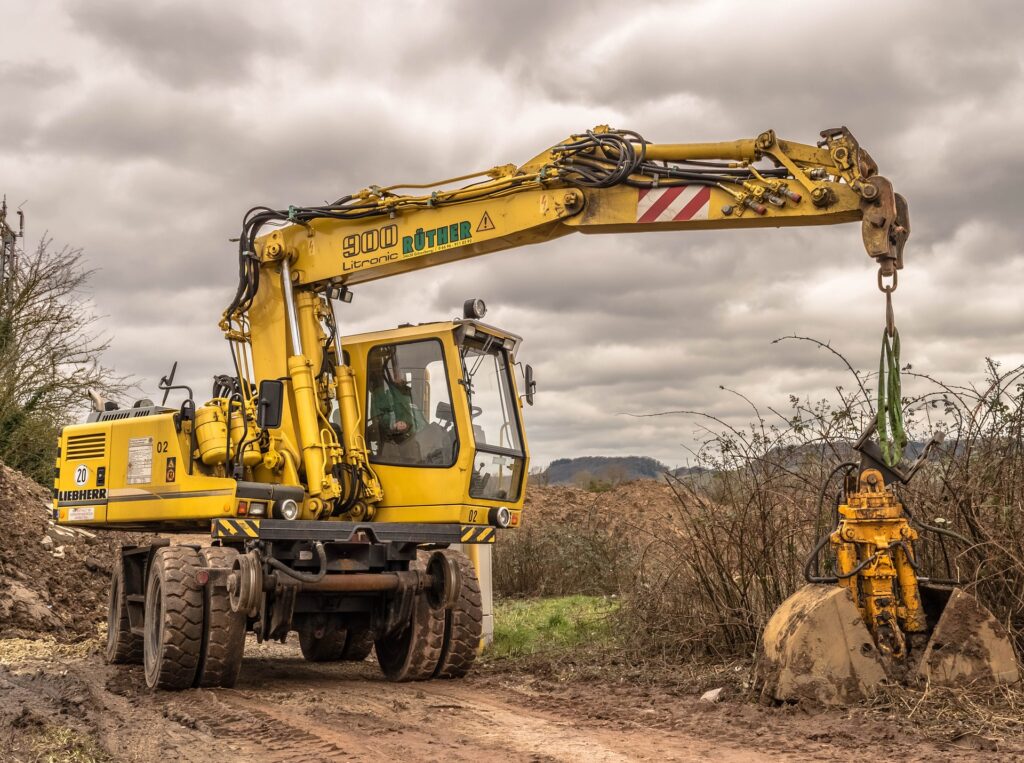Since the start of the war in Ukraine in February 2022, Egypt has seen rapid price jumps across the board. Global commodity prices, inflation, currency exchange rates and interest rates are at all-time highs. That invariably affects housing prices. Global Property Guide, a real estate data curation portal, found real estate prices in Egypt (discounting inflation) rose by nearly 58% between January 2022 and 2023 — adjusted for inflation, the increase was almost 34%.
A significant portion of those increases is due to more expensive building materials. Published research from the Faculty of Engineering in Mansoura estimated 60% to 70% of the cost of low-income housing, which the developers usually sell at near-zero profit margins, is down to “engineering design and construction material.”
Mohamed Salah, an architectural engineering professor and author of the research paper, said local developers and even the government “depend mainly on imported building materials and technologies” for low-income housing projects.
Switching to sustainable construction materials that are locally sourced coupled with sustainable manufacturing practices could prove beneficial. “Sustainable materials … ensure the availability of resources for future generations by lessening the amount of materials we use in our daily lives,” said Salah. “It leads to a more efficient use of energy, water and materials, reduces the volume of toxic waste, and can provide economic benefits.”
Fueling demand
Building eco-friendly cities that integrate the latest technologies and are resilient to climate change fuels demand for sustainable construction materials. That need will increase in the coming years, as the U.N. Department of Economic and Social Affairs estimates 68% of the world’s population will live in cities by 2050.
Developers are already investing to meet the expected demand. In a December report, “A strong pipeline marked the first half of 2022 as developers fought supply chain issues and other disruptions to get projects started before further interest rate increases,” said Andrew Volz, construction research lead at Jones Lang LaSalle.
A paper from Method, a management consulting firm, said construction companies building new cities and developments could use sustainable materials in public transport, roads, and waste management networks in addition to residential and commercial buildings.
Another factor making a case for sustainable construction materials is to reduce costs and increase profits. “Globally, earnings before interest and tax from construction activities [average] just 5.5% of sales,” said a 2020 report from Deloitte, a research firm. “The industry’s traditionally low margins, combined with increasing project complexity, fierce competition … and supply chain constraints will likely continue to put extra pressure on … profitability.”
Additionally, prices of traditional construction materials are rising globally. Construction Dive, a specialized publication, reported that out of the 10 most-used construction materials, only lumber would witness a price drop in 2023. The rest should see price jumps ranging from 8.2% to 111% for diesel fuel.
Reducing emissions is also driving the need for sustainable construction materials. The Economist reported in March 2022 that conventional construction materials account for 10% of global emissions.

Localizing sustainability
The shift to sustainable and recyclable construction materials is already happening. “Building material suppliers are now under pressure to create new value propositions,” CHAS, a consultancy focusing on risk management and compliance in the construction industry, said in its December blog. “That sets them apart from the competition and [enables them to] deliver products and services to keep up with industry changes and new regulations.”
A report from Allied Marketing Research estimated “green or sustainable building market materials will grow at a compounded annual rate of 8.1% between 2021 and 2030.”
In Egypt, rice straw is one of the most popular locally available sustainable building materials. According to the Mansoura University research paper, Egypt produces more than 3.5 million tons yearly. Additionally, at $2.50 per square meter, it costs a fraction of the $20 per square meter for red brick. The paper said several Egyptian studies and research had been made to discuss the possibility of using rice straw as a low-cost alternative to brick.
Another locally sustainable construction material is compressed earth blocks of clay, sand, and other inexpensive materials. The Mansoura University paper noted the technique uses less energy than fired clay bricks. They also are less expensive, with every 1,000 compressed earth blocks costing the same as one red brick.
In 2018, the Egyptian Building National Research Center announced it is working on national standards for compressed earth blocks. Meanwhile, the center is developing new types of bricks from industrial and agricultural solid wastes.
The Mansoura paper noted that using glass-fiber wall panels instead of bricks makes construction more sustainable. Other eco-friendly materials are also available locally, including lightweight aerocon panels with cement filling the space between the two sheets.
The research also recommended using cork and bamboo for floors, vinyl, linoleum and even agricultural waste as sustainable thermal insulation.

Future construction materials
In the long term, new techniques and know-how will improve existing construction materials, making them more resilient in the face of climate change and pollution.
One is self-healing concrete, which uses water-activated bacteria to coat cracks that may appear due to significant and sudden temperature variations, high humidity, and coastal weather. “If you have cracks, water comes through – in your basements, in a parking garage,” Henk Jonkers, a professor at the Delft University of Technology in Holland, told CNN Business. “If this water gets to the steel reinforcements – in concrete, we have all these steel rebars – if they corrode, the structure collapses.”
Another method to make concrete more sustainable is treating it to filter polluted outdoor air, making it healthy enough for occupants. According to Transmaterial, one of the companies developing those building materials, the process does not require any additional energy.”
Miloš Pavelek, a building designer for Ogiva, an architecture and design company, published a report in 2019 supported by the Czech University of Life Sciences detailing the importance of using bio-waste from agriculture or wood chips. Selecting the correct combination of “bio-waste materials absorbed thermal fluctuations of the exterior environment and kept the indoor building environment at a constant temperature regardless of such fluctuations.”
Sustainable manufacturing
Construction companies need to modify their operations to maximize the benefit of using sustainable building materials. “Identical building materials may be produced by several manufacturers,” noted Jong-Jin Kim, an assistant professor of architecture at the University of Michigan, in a research paper. “The manufacturing process can contribute significantly to environmental sustainability.”
The first is to “shift toward circular economy models [where] waste is minimized, and whatever is produced goes into another manufacturing cycle,” noted CHAS.
It starts with the construction company developing recyclable materials and investing in appropriate resources and processes to reuse their own waste. “The waste reduction feature indicates that the manufacturer has taken steps to make the production process more efficient by reducing the amount of scrap material that results,” said Kim.
Governments also play a role in expediting such investments. CHAS said legislation, incentives, and securing a “verified green” certification from the state are the most effective ways to ensure construction companies adopt a zero-waste policy. “For instance, [the U.K.’s] Public Policy Note 06/21 now requires businesses applying for government contracts with an annual value of over 5 million British pounds to demonstrate their commitment to achieving ‘Net Zero’ by 2050.” England also has a “verified supplier” certification that aligns with its national environmental, social and governance framework.
CHAS also noted the “growing popularity of prefabricated construction,” where builders assemble ready-made pieces of the house on-site rather than having to build everything on location. CHAS said this method is faster and allows for better quality control. “This trend will likely continue to grow in popularity in the coming years, presenting … opportunities for material suppliers.”
Technology also will play a role in making construction sustainable. “We predict that digital fabrication methods, such as 3D printing, will continue to grow,” CHAS noted. The paper from Method said construction firms could use such technologies to make things like concrete and build walls, floors and other components.”
The research added that 3D-printed homes would be more suitable for low-income housing.” Those residential units have basic designs, so constructing them using 3D printing is generally straightforward and faster. Additionally, they are less expensive than conventionally built homes, and their prices are falling. “The cost of an entirely 3D-printed home is currently around … $10,000 … and there’s a possibility of that being reduced to $4,000,” the Method report said,
The Method paper also noted the use of other technologies, including robotics and drones for land surveys.
Implementing such sustainable solutions and advanced technologies could prove challenging for construction companies. “All of these developments may seem difficult to grasp and implement,” the Method research paper said. “Tech has disrupted every industry, so it’s no surprise that various sectors in the construction industry [need to follow] suit.”







